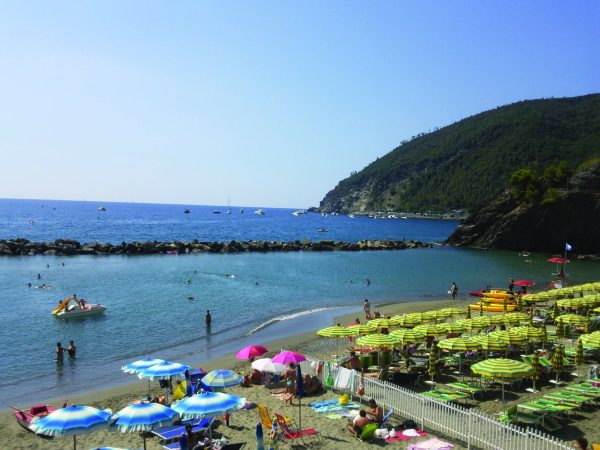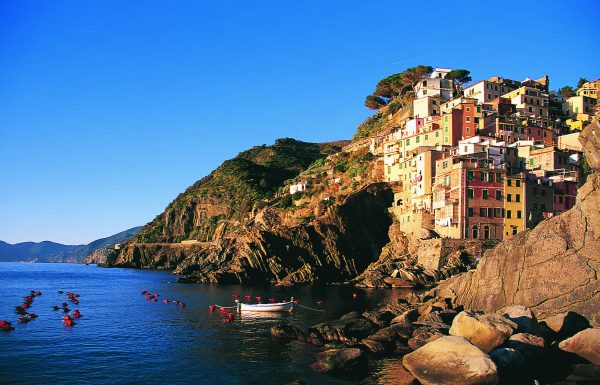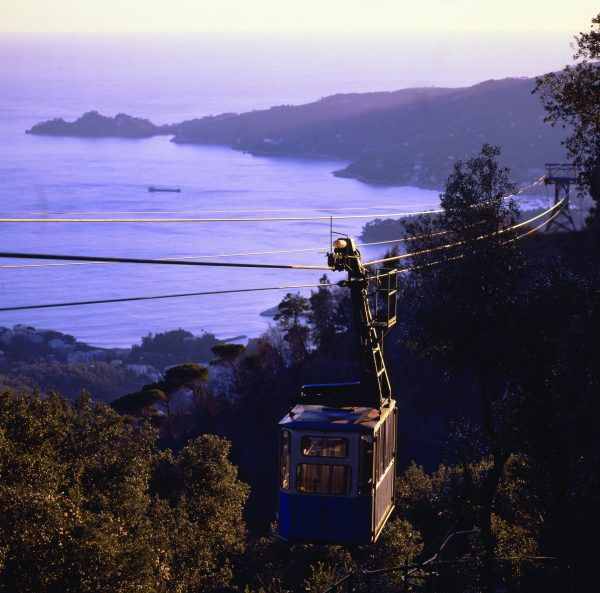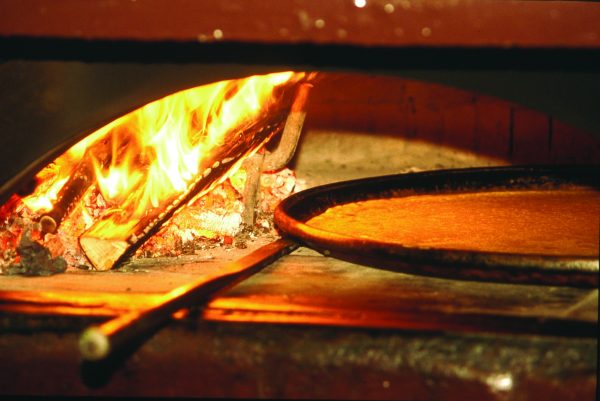Rachael Martin is spoilt for choice as she picks out ten good reasons why Liguria is a favourite destination for all the family
Images by Foto Archivio Agenzia In Liguria unless otherwise stated
Home to the ancient Liguri and later the maritime Republic of Genoa, Liguria’s spectacular coastline, pastel-coloured villages, well-equipped beaches and mild climate have been loved by many. The first bathing establishment was opened in 1866 in Savona and in the 1870s trains arrived from cities and towns in Lombardy and Piedmont. By the late 1870s Alassio and San Remo were popular with the British as an alternative to France’s C te d’Azur. More visitors discovered Italy’s northern shores after the Second World War; then, during the post-war boom of the 1950s and 1960s, the Italian beach holiday was born and Liguria became one of its favourite destinations.
1. Retrace the steps of 19th-century travellers in Alassio and Bordighera
Alassio’s history of 19th-century British visitors has left both the Anglican Church, Hanbury Tennis Club and beautiful Hanbury Gardens in nearby Ventimiglia. Enjoy sandy beaches, go shopping along the Budello di Alasso or head to Villa della Pergola with its wonderful botanical gardens. Bordighera is where Monet once stayed for 79 days and painted over 50 canvases. It’s famous for its Villa Regina Margherita di Savoia, the queen’s private residence and where she died in 1926. Also visit the exotic gardens of Giardino Esotico Pallanca and take a walk along the seafront promenade. Nearby Albenga has a beautiful centro storico with medieval towers, symbols of the power of its inhabitants. Albenga is also particularly suitable for families with young children because of its sandy beach and shallow waters. Look out for purple asparagus in spring.
2. Enjoy the balmy climate on any of the region’s 32 blue flag beaches
The Riviera Ponente (western coast) stretches from Genoa to France and has plenty of sandy beaches to enjoy. Diano Marina has a 3km sandy beach with shallow waters. Varazze also has a long, sandy blue flag beach and the wonderful Lungomare Europa seafront, which you can walk or cycle along. Finale Ligure’s beaches are also child-friendly, especially the beach at Varigotti. The Riviera delle Palme (Riviera of Palms) in the province of Savona boasts the beautiful sandy beach of Loana. Also go to Taggia, famous for its Taggiasca olives. It’s along the Riviera dei Fiori (Riviera of Flowers) in the province of Imperia, where the climate is exceptionally mild. East of Genoa is the Riviera Levante, wilder and home to the Cinque Terre National Park. The beaches Centrale (sand) and La Secca (sand and pebbles) in Moneglia are blue flag beaches. Camogli has a pebble beach, while Lerici has several blue flag beaches.
3. Take a boat trip along the coast
The Cinque Terre boat trip between villages is a classic, and the perfect way to soak up views of all those pretty villages. A boat trip in the Gulf of La Spezia, also known as Golfo dei Poeti (Gulf of Poets), is another classic. The gulf takes its alternative name from the Romantic poets who came here and loved it. Byron, Percy Shelley and Mary Shelley all spent time there, as did George Sand. Portovenere, Lerici and Tellaro are some of its highlights. You can also take a boat from Camogli along the coast to Portofino or to San Fruttuoso di Camogli with its famous 10th-century Benedictine abbey, Abbazia di San Fruttuoso, also known as San Fruttuoso di Capomonte. Its tombs of the Genoese Doria family are testament to their patronage of the abbey. The cove was also home to fishermen and popular with pirates in the past.
4. Let rip at the Meditterean’s best surfing spots
Hire bikes in Levanto and cycle by the sea to Framura via Bonnassola, two little corners of Ligurian paradise. The 24km Riviera dei Fiori cycle path goes from San Lorenzo al Mare to Ospedaletti. For surf lovers, Levanto and Chiavari are both great for beginners. Varazze and Recco (Blackwave Surf School) are more rocky. View Portofino from a kayak. The Val di Vara Aerial Adventure Park takes you high up amid the trees, while the Parco Acquatico Le Caravalle water park is also a great day out for all the family. Not so active but equally enjoyable is a walk around Ventimiglia’s Museo Preistorico dei Balzi Rossi, one of Europe’s most important series of prehistoric caves and tombs.
5. Visit the scenic Cinque Terre National Park
The Cinque Terre National Park comprises the five villages of Monterosso, Vernazza, Corniglia, Manarola and Riomaggiore, smatterings of pastel-coloured houses spectacularly positioned on the hillside. The villages date back to the medieval period and at one time were only linked by mule tracks or from the sea. The people here were farmers, and grew vines and olive trees along stone wall terraces. Cars are mainly prohibited, so it’s a case of take the train, which links all five villages, get a boat or walk along the area’s system of ancient footpaths. The classic seven and a half mile Blue Path between the villages is suitable for all the family. Alternatively, walk along the Via dell’Amore (Path of Love) from Manarola to Riomaggiore. Bear in mind that the Cinque Terre can get extremely busy so you’re probably best planning a visit out of season.
6. Enjoy a day out in lively Genoa
Genoa’s medieval centre with its caruggi alleyways and city gates at Porta dei Vacca and Porta Soprano boasts palazzi and art galleries. The Porto Antico (old port) is home to bars, restaurants, shopping, the city’s renowned Aquarium and an outdoor swimming pool. Don’t miss the Galata Museum of the Sea and explore its submarine, Nazario Sauro. Whale-watching boat trips also leave from the Porto Antico and take you all along the Riviera Levante. The city’s lighthouse, the Lanterna di Genova, is near the ferry terminal; climb its 172 steps for views over the port and old city. And don’t forget the street food. Head to the Antica Sciamadda (Via San Giorgio, 14R) and Antica Friggitoria Carega (Via di Sottoripa, 113R). A friggitoria is the Genoese equivalent of the British fish and chip shop.
7. Beach clubs are the places to be
While there are some free beaches, there are also many private beach clubs which offer sunbeds, umbrellas and other facilities. Santa Margherita Ligure, east of Portofino, is popular with the Milanese. During the 17th century, wealthy Genoese began to build summer homes here. Villa Durazzo Centurione on the hill above the town is a fine example. Santa Margherita is also a fishing port, so you could always end your day with locally caught red prawns. Also head to Sestri Levante in the Baia del Silenzio (Bay of Silence). It’s the perfect setting for that spritz on the beach at one of its beach bars. Note that you’ll probably have to book a place at a beach club in advance during busy seasons.
8. A window to the past
Liguria is steeped in maritime history and its relationship to the sea. La Spezia is the busy port just south of the Cinque Terre, home to Italy’s largest naval base and a fascinating old city complete with alleyways and local trattorias. Visit the city’s naval museum, the Museo Tecnico Navale della Spezia, just outside the Naval Arsenal. Imperia was founded in 1923, but its origins date back much earlier. Borgo Marino was an old fishing village which is now the city’s tourist port, while Borgo Maurizio and Oneglia (known as Paraiso) are the two villages upon which Imperia was formed. The tower there was used both as a fort and a prison. Savona also has an imposing fortress, the Fortezza del Priamar, on the hill above the port. It was built by the Republic of Genoa in the 16th century and is the largest fortress along the whole Ligurian coast.
9. Sensational street food
Dating back to 16th-century Genoa, the classic focaccia alla genovese is flat, with olive oil and little holes on the surface. Focaccia di Recco is a thin bread filled with fresh local cheese and was eaten during the time of the Third Crusade, when the people of Recco were forced to hide inland from invaders. Legend surrounding the farinata recalls a ship in a storm during the Battle of Meloria between the Republics of Genoa and Pisa in 1284. Chickpea flour and olive oil spilled onto the deck, got mixed with salt water, and, because provisions were low, was scooped up and cooked. Nowadays, it’s cooked like a pancake until the edges are crispy. Torte di verdure, vegetable quiches, are another Ligurian treat. Try the torta di riso, filled with rice, or the torta baciocca (potato quiche). All good warm or cold on the beach.
10. There are plenty of opportunities for hiking
Liguria is the place where sea and mountains live side by side. The mountains are right there above, which makes for spectacular landscapes and lots of walking opportunities. Get the cable car from Rapallo up to Montallegro for trails with sea views. Stop for lunch under the pergola of trailing plants and soak up the views at Casa del Pellegrino. They also have rooms. The Alta Via dei Monti Liguri, or High Route of the Ligurian Mountains, is a 440km hiking trail that can easily be broken down into smaller sections, while the Mount Portofino Natural Regional Park has 80km of spectacular walks. Also walk from Camogli slightly further along to San Fruttuoso, while Varigotti and Noli are two beautiful towns on the Riviera Ponente. Walk the Sentiero del Pellegrino (Pilgrim’s Trail), which takes you high up above with wonderful sea views.




